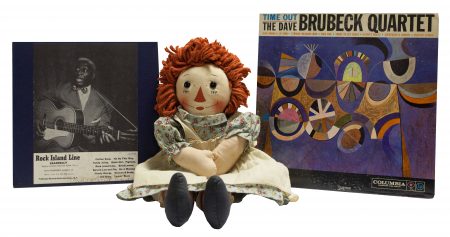Connecticut’s History, Wilton’s Story
Permanent Exhibition
Connecticut’s History, Wilton’s Story, shows Wilton’s evolution from pre-Colonial times to a small New England agricultural village to today’s suburban town. It traces the history and cultural dimensions of Wilton, and gives context for the Society’s historic buildings and collections. Connecticut’s History, Wilton’s Story will allow a visitor to learn, for instance, that the late, great jazz musician Dave Brubeck; soccer Olympian Kristine Lilly; blues and folk singer Lead Belly; American Impressionist painter J. Alden Weir; and Johnny Gruelle, author and illustrator of the Raggedy Ann books, had Wilton roots and connections. The exhibit was designed both to present the town’s history, and to act as a jumping off point for visitors to explore other sites in Wilton, such as Weir Farm, Quarry Head State Park, and Ambler Farm.

Connecticut’s History, Wilton’s Story presents carefully selected objects from the permanent collection and a number of distinctive silhouette pieces. These are interpreted by theme: Origins, Local Policy, Global Context, Transportation and Legends. A large map of Wilton, central to the exhibition, shows connections between objects, stories and places – “History is Here” is the message of the installation. An Ives model train from 1884 leads to learning about railroad coming to Wilton, while a chunk of granite tells a little known bit of history about the old quarry on Ridgefield Road – which you can visit and hike. The wandering Old Leatherman, a sensational murder at Lambert House, and an unrealized plan to have a farm with 1,000 cows on Turner Ridge are some of the little-known aspects of the town. The exhibition even provides a map of Wilton marked with historic highlights to show “History is Here”, a theme of the exhibition.
This exhibition would not be possible without major funding provided by the Connecticut Department of Economic and Community Development’s “Good to Great” program, plus the generous support of Mary and John Brock.